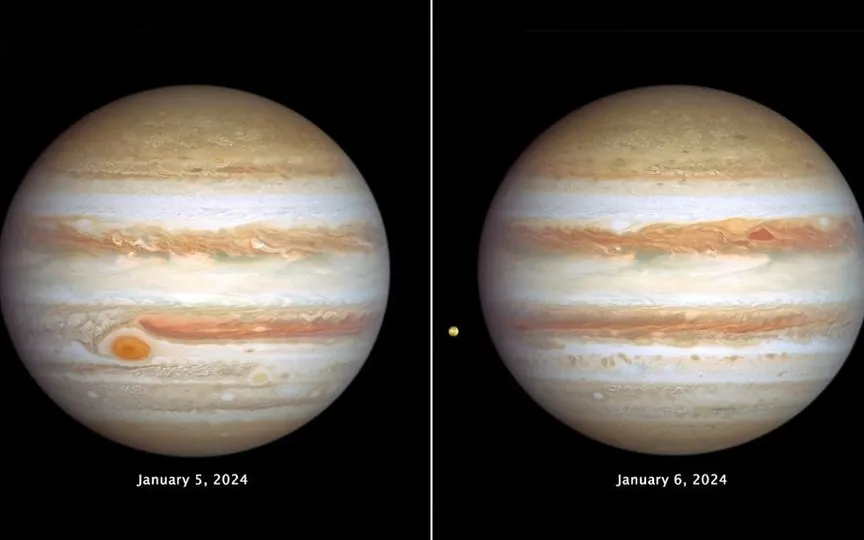High-resolution images from NASA’s Hubble Space Telescope provide a detailed view of Jupiter’s turbulent atmosphere
The latest images of Jupiter taken by the Hubble Space Telescope have captivated astronomers and space fans once more, showcasing the gas giant’s ever-changing atmosphere with swirling storms and the famous Great Red Spot. These stunning portraits, captured on January 5-6, 2024 and released by NASA, offer a peek into the turbulent weather patterns and atmospheric events happening on Jupiter on a massive scale. The Hubble Telescope’s remarkable clarity and accuracy have given us unprecedented views of the planet’s different hemispheres, each displaying its own distinct traits and qualities.
In one hemisphere, the Great Red Spot takes center stage – a massive storm system that has captured the imagination of astronomers for centuries. However, the latest images reveal a worrying trend – the gradual shrinking of this iconic feature. Over the years, Jupiter’s Great Red Spot has shrunk significantly, raising questions about its future and the forces driving its evolution.
But the Great Red Spot is not the only spectacle on Jupiter’s canvas. Hubble portraits also show countless smaller storms and cloud bands, each contributing to the planet’s vibrant and ever-changing appearance. From vortices to anticyclones, Jupiter’s atmosphere is a dynamic tapestry of atmospheric dynamics and meteorological phenomena.
In addition, these images provide valuable insights into Jupiter’s atmospheric processes and help scientists better understand the mechanisms behind its complex weather patterns. By studying the planet’s storms and cloud formations, scientists can gather valuable information about atmospheric dynamics and the forces shaping Jupiter’s volatile environment.
The Hubble Space Telescope observations are part of NASA’s Outer Planet Atmospheres Legacy (OPAL) program, which aims to continuously monitor the atmospheres of gas giants like Jupiter. The Hubble Telescope continues to revolutionize our understanding of Jupiter and other exoplanets with its high-resolution imaging capabilities, uncovering new mysteries and uncovering the secrets of our Solar System’s most enigmatic worlds.
As scientists examine the data provided by the Hubble telescope, they hope to unravel the mysteries surrounding Jupiter’s turbulent atmosphere and gain valuable insights into the dynamics of the gas giant planets.




